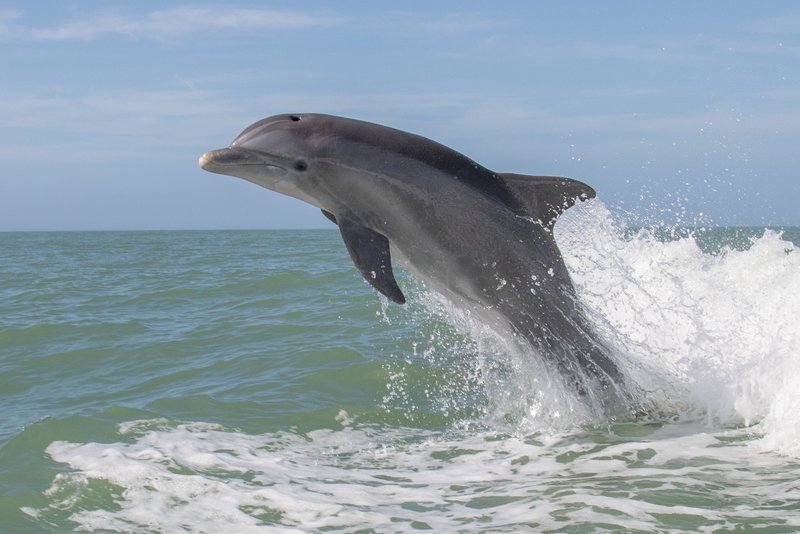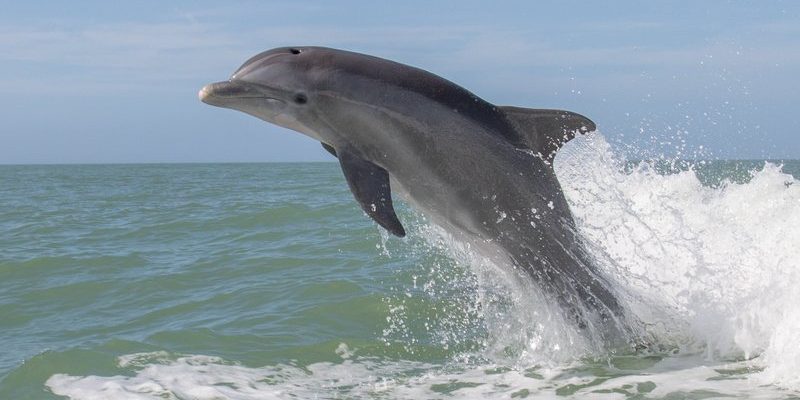
When we think about dolphins, it’s easy to picture them frolicking in the waves. However, the reality isn’t as cheerful as it appears on the surface. Factors such as pollution, habitat loss, and fishing practices play a huge role in their survival. Just like a delicate balance in an ecosystem, if one part is disturbed, the ripple effects can impact everything else, including our beloved dolphins. So, what are the common threats that dolphins face in their natural habitats? Let’s break it down.
1. Water Pollution
Water pollution is one of the biggest threats to dolphins in the wild. When chemicals from industries, sewage, and agricultural runoff enter the ocean, they create a toxic environment. Dolphins are particularly vulnerable because they are at the top of the food chain in their ecosystem.
Pollution can have serious health effects on dolphins, just like it can on humans. For instance, the ingestion of heavy metals can lead to cognitive impairments and reproductive issues. Imagine trying to navigate or function in a world where everything you touched was toxic. Unfortunately, that’s a reality for some dolphins. If their food sources become contaminated, they can suffer from malnutrition or sickness.
Not only does pollution affect the dolphins directly, but it also disrupts their habitats. Coral reefs and marine plants that provide shelter and food are also harmed. This loss of habitat makes it increasingly difficult for dolphins to survive in their natural homes.
2. Habitat Loss
Habitat loss is another pressing concern for dolphins. As humans continue to build coastal developments and urbanize areas near the ocean, we’re encroaching on the spaces dolphins call home. Wetlands, estuaries, and coastal waters are crucial for their breeding and feeding. When these areas are modified or destroyed, it drastically impacts dolphin populations.
You might be wondering how this affects the dolphins directly. Well, without a proper environment, dolphins struggle to find enough food and safe places to raise their young. Just think of it as a family trying to live in a shrinking neighborhood where there’s no more access to parks or places to play.
Furthermore, boat traffic and noise pollution from construction and travel can drive dolphins away from their natural habitats. They rely on echolocation to communicate and hunt, and excessive noise can interfere with these vital activities. This situation can lead to increased stress and lower survival rates.
3. Entanglement in Fishing Gear
Dolphins are often caught in fishing gear, which is another major threat they face. You might have seen videos or heard stories about dolphins getting tangled in nets or accidentally captured. It’s a distressing situation that can lead to serious injury or death.
When dolphins get caught, they can’t swim freely, which affects their ability to hunt or surface for air. This struggle can result in drowning or exhaustion. It’s heartbreaking to think about a creature so intelligent and capable being trapped in a man-made hazard.
To tackle this issue, some fishing practices are being modified to be more dolphin-friendly. For example, using specialized nets and gear can help reduce bycatch, which is the unintended capture of dolphins and other marine life. It’s an important step, but more awareness and action are needed to protect these majestic creatures.
4. Climate Change
The impacts of climate change are becoming increasingly evident in our oceans, and dolphins aren’t immune to these changes. Rising sea temperatures can alter the distribution of fish populations, which are a primary food source for dolphins.
Imagine going to your favorite restaurant only to find out that they’ve run out of your favorite dish. Frustrating, right? That’s what dolphins experience when their food becomes scarce or unavailable due to changing ocean conditions.
Additionally, climate change can lead to ocean acidification, which affects the overall health of marine ecosystems. This can disrupt food chains and lead to declines in the populations of species that dolphins rely on. Protecting dolphins means addressing the broader issue of climate change and its effects on our oceans.
5. Illegal Hunting and Capture
Sadly, illegal hunting and capture of dolphins persist in some parts of the world. In certain regions, dolphins are hunted for their meat or captured for marine parks and aquariums. This trend is not just cruel; it threatens the overall dolphin population.
Deep down, we all know that dolphins are not just entertainment; they are sentient creatures with complex lives and emotions. When dolphins are captured, they often suffer from stress, and their social structures can be irreparably damaged. It’s akin to taking someone away from their family and friends; the emotional and physical impacts can be devastating.
Efforts to combat this issue involve increased law enforcement and public awareness. Activist groups work hard to highlight the plight of dolphins and push for stricter regulations against illegal capture.
6. Ship Strikes
Every year, many dolphins fall victim to ship strikes, especially in busy shipping lanes. As vessels move through dolphin habitats, collisions can occur, causing serious injury or death to these marine animals.
Dolphins, being agile swimmers, might avoid boats most of the time. But in some cases, they can’t react quickly enough to avoid a large vessel, leading to tragic outcomes. It’s a reminder that our oceans are shared spaces, and we need to be mindful of our impact on marine life.
One way to help mitigate this threat is by adopting “slow zones” in areas where dolphins are known to inhabit. Lowering boat speeds can reduce the chances of collisions, allowing dolphins to swim safely.
7. Noise Pollution
Noise pollution is often an overlooked threat to dolphins. They rely on echolocation to find food, communicate with one another, and navigate through their environment. When human activities produce loud sounds—such as shipping, drilling, or construction—it can drown out the signals dolphins need.
Think about how hard it is to hear a friend when there’s a lot of background noise. It can be frustrating, right? For dolphins, this can lead to confusion and hinder their hunting abilities. Prolonged exposure to loud noises can even lead to stress and disorientation.
Raising awareness about the impact of noise pollution is vital. Implementing regulations around noisy activities in critical dolphin habitats can help minimize disturbances and protect their natural behaviors.
8. Conservation Efforts and Solutions
Despite the challenges dolphins face, there are numerous conservation efforts underway aimed at protecting them. Organizations across the globe are working to raise awareness, educate the public, and advocate for stronger protections.
Some initiatives focus on creating marine protected areas (MPAs). These designated zones can provide a safe haven for dolphins and their habitats, allowing ecosystems to thrive without interference.
You can also get involved! Supporting local conservation groups or participating in beach clean-ups can make a difference. Every little bit helps in the fight to protect these incredible creatures.
In conclusion, while dolphins are charismatic and resilient creatures, they face numerous threats in the wild. From water pollution to climate change, understanding these challenges is the first step toward making a positive change. Protecting dolphins means protecting the health of our oceans and, ultimately, our planet. With awareness and action, we can help ensure that future generations get to enjoy the beauty and wonder of these magnificent animals.

